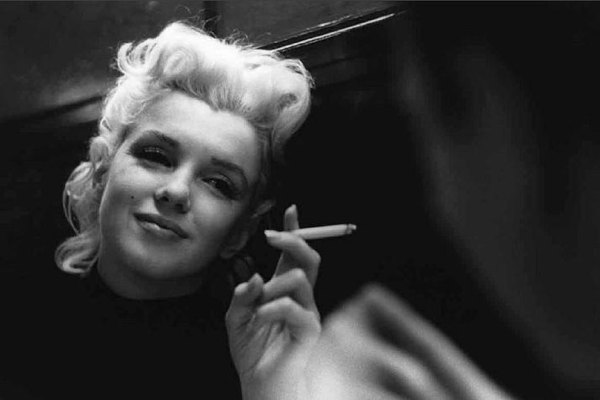 |
| Marilyn Monroe by Eve Arnold, 1955
By Joyce Carol Oates, New York: Harper Collins, 2001, p. 738
When I first encountered this novel, I remember telling my partner that this was the finest embodiment of contemporary gender theory that I had ever encountered. Joyce Carol Oates is taken with Marilyn Monroe; her most recent novel, Black Dahlia & While Rose, also features Marilyn as a chief protagonist. Marilyn is, obviously, a cultural icon and the outline of her biography is well know. What makes this lush, beautiful story so special is that Oates reimagines Marilyn's life from the inside. She explores Marilyn's subjectivity by highlighting the poetic, spiritual, and creative aspects of her personality.
Oates poignantly captures the presence of working-class shame in Marilyn's family through a preoccupation with sweat. Maintaining a ladylike appearance hid the crushing experience of painful periods, numerous abortions, and starvation diets. Perspiring through a dress or staining a dress with menstrual blood also highlights the terror of embodied femininity for Marilyn. Oates draws a devastating portrait of the grotesque in female sexuality. "Stupid cow" is an epithet thrown at Marilyn on more than one occasion. Writing on the Salon Web site, Pam Rosenthal wonderfully captures the power of Oates prose: [“B]londe” is a huge, incantatory, expressionistic work that doubles back on itself to retell stories again and again, building its themes and variations through a seeming infinity of retakes. Description approaches hallucination. The action is told by numerous voices, some singular and famous, some anonymous and plural. Sometimes the narrative voice is breathless, almost gasping — the ghostly Marilyn Monroe voice, oddly formal and well mannered, too high and thin for the body that produced it. |
A diary devoted to reading the 100 novels cited in Jane Smiley's 13 Ways of Looking at the Novel
Saturday, January 19, 2013
Blonde
Subscribe to:
Post Comments (Atom)
No comments:
Post a Comment